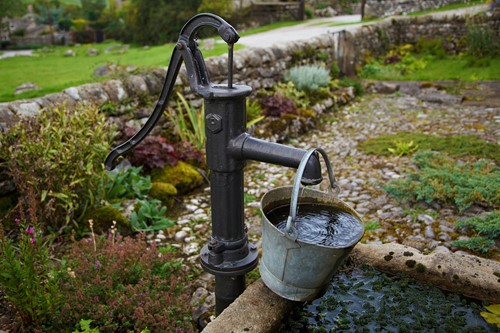
The thought of private well ownership grows increasingly attractive as the cost of municipal water skyrockets. According to the Environmental Protection Agency (EPA), residential homes use upwards of 82 gallons daily at an average annual cost that may exceed $1,000.
Installing a private well typically involves an upfront cost that differs significantly from state to state. But after the well has been drilled and water flows freely through the house, maintenance and upkeep drop household expenses to a few hundred dollars per year. These attractive benefits, coupled with eliminating reliance on municipal resources, sometimes prompt property owners to leap before they look.
If you are considering drilling a private well, these are things you should know before breaking ground.
1: What are the Well-Placement Regulations?
Zoning and building code regulations typically require property owners to position a well away from roadways, abutters and septic fields, among others. A typical setback from the street may require upwards of 100 feet. That distance may also apply to the safe distance from greywater fields and sewage holding tanks. The conventional wisdom stems from avoiding drinking water contamination.
One requirement that sometimes gets skipped or passed over involves placement concerning abutting properties. Cities, towns and counties may have a hard-and-fast rule about property line distances. But one measurement that too often gets overlooked includes the distance from a neighbor's septic system. Drilling a well without accounting for safe and regulated distances could cause the project failing inspection.
2: What Do You and Abutter Put into the Soil?
It’s not uncommon for residential property owners to use a wide range of products to maintain a robust landscape. But items such as lawn fertilizer and weed killers often include toxins. When the potable water comes from underground municipal pipes, minimal risk of contamination exists. But that changes when someone gets off the local water system. The EPA ranks the following among the most common well water hazards.
- Microorganisms
- Nitrate & nitrite
- Heavy Metals
- Fluoride
- Radionuclide
- Organic Chemicals
Homeowners who plan to transition to private well water may want to consider taking an inventory of potentially toxic agents they leverage. Whatever goes down the drain or lands on the topsoil can end up in the drinking water.
3: What Depth Should the Well Reach?
An issue that few property owners consider involves well depth. Conventional thinking revolves around hitting sand-free water and wiring the pumping system. But a more robust and secure aquifer may reside deeper. That’s one reason property owners work with well-drilling professionals. A deeper well may prove invaluable when droughts occur.
With some due diligence, property owners can enjoy all the benefits of low-cost clean drinking water. Investing in a private well also minimizes reliance on quasi-governmental outfits.
About the Author

Kim Daneault
Like many of her clients, Kim’s family is the driving force in her life. Having lived and traveled the world, her husband and she have found New England to be the best place to raise a family; and have made it their home for over 20 years. She is happy to have built a family with a strong commitment to the New Hampshire area. And has developed a history of active participation in the community. Whether it is through the successful real estate practice; the many volunteer positions; or her active family time;
